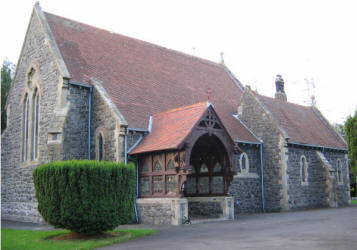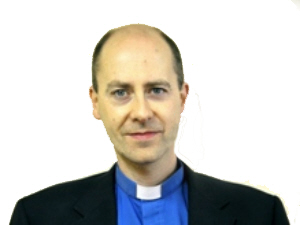
All Saints’ Parish Church

Parish Church of All Saints’ Eglantine ,
consecrated in July 1875.

Rev. T. J. Close Rector
Eglantine Road, Lisburn.
Rector: Rev. T. J. Close
Telephone: 9266 2634
Sunday services:
Family Service: 10.00am 1st Sunday
Morning prayer: 11.00am 2nd, 4th and 5th Sundays
Holy Communion: 11.30pm 1st Sunday
11.00pm 3rd Sunday
Evening prayer: 6.00pm 1st, 2nd, 3rd and 5th Sundays
Holy Communion: 6.00pm 4th Sunday
Web site:
All Saints' Eglantine
HISTORY
The foundation stone was laid on the 27th June 1874, and the church was consecrated on the 15th July 1875. The cost of the building was £3,442 including the furnishings. The church is approached through a group of closely cut yew trees – twelve in all, and known as the twelve apostles. Behind the church is a well-kept graveyard, which came into use in the 1920s. There can be seen the graves of twenty-one Commonwealth Air Force Men killed during the Second World War. At that time the church was surrounded by buildings, which were part of the Long Kesh aerodrome that stretched to Sprucefield.
For a more detailed history of the church, click on: www.eglantine.org
Brief history as recorded in a book ‘Lisburn’s Rich Church Heritage’ by John Kelly
Consecrated in July 1875, the church was originally built as a private chapel for the Mulholland family of Eglantine House as a memorial to St Clair Kelburn Mulholland, one of the family who founded the York Street Spinning Mills, Belfast, and his son, also named St Clair. The church is approached through a group of twelve closely cut yew trees known as the twelve apostles. Built in the Early English style at a cost of £3,442, it consists of nave, apsidal chancel, south aisle and transept with vestry, organ chamber and south porch. The communion table, surmounted by a reredos of alabaster, is approached by a gradual ascent of seven steps from the nave. A credence table of carved stonework is placed on one side. The font and pulpit are of Caen stone with marble columns. The porch in the style of a lych gate is constructed of massive woodwork resting on a low wall. A warm colour is imparted to the roof with the use of red tiles. A small turret containing three bells completes the exterior. The Mulholland family remained a strong influence in the parish until 1917 and also provided a sexton’s house, a school and residence at Newport and a rectory. Behind the church is a well-maintained graveyard, which came into use in the 1920s. Twenty-one Commonwealth Air Force men killed during the Second World War are buried there. The new parish hall beside the church was built in 1995 to commemorate the 120th anniversary of the church, and replaced the old parish hall (formerly the school) at Newport. The Rev Canon William Bell, was instituted in March 1989. Rev T. J Close was installed in October 2011 after Canon Bell's retirement.
30/07/2012
